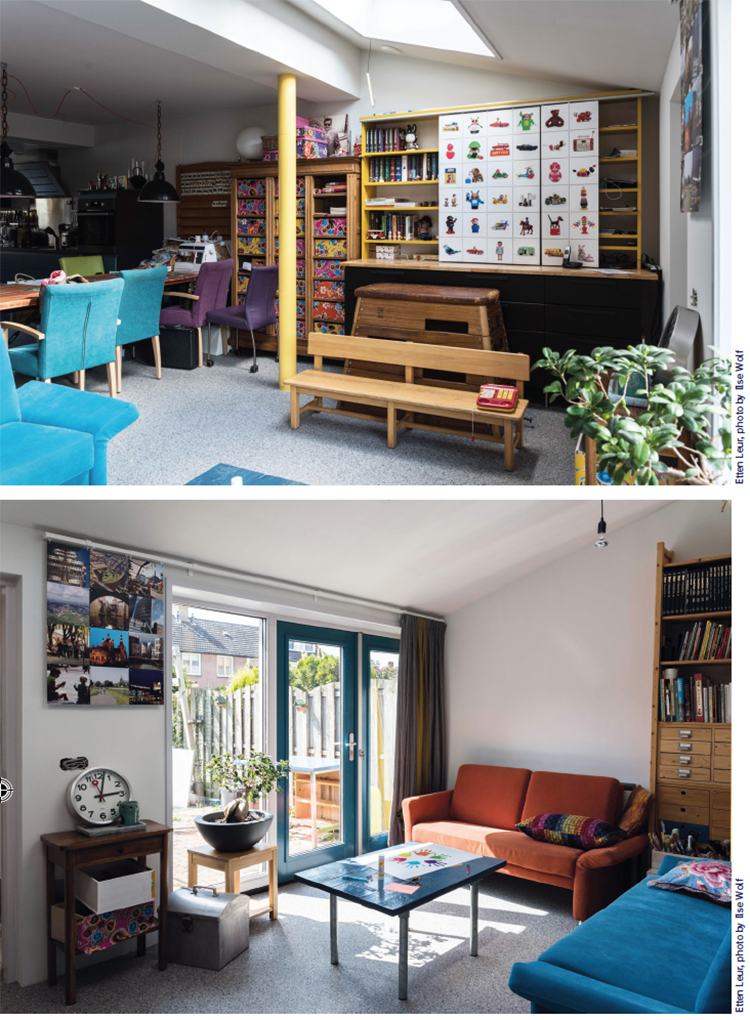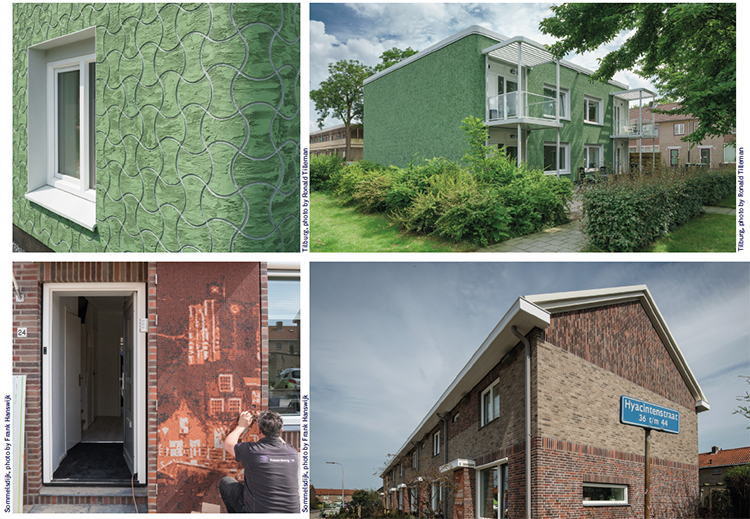Sprong in Dutch means “leap forward.” In fact, a leap forward is exactly what Energiesprong has realised over the last few years in the residential housing construction and energy efficiency sector in the Netherlands. One figure reigns above all: 11,000. This is the amount of homes that have been renovated and transformed into Net Zero Energy (NZE) houses by the pioneering project born out of an agreement between Dutch property developers and social housing associations, and which is now expanding into the rest of Europe and the USA.
In Holland, just as in numerous other European countries, it is important to renovate social housing built in the 1960s which, after 50 years of use, is often characterised by intense energy inefficiency and high maintenance costs. In the search of a solution, in 2010 the then Minister of Housing Construction, neighbourhoods and government integration of the Balkenede administration; set aside 45 million euros to make this real estate legacy more efficient through the Dutch innovation programme Energiesprong.
In Energiesprong the starting point is reducing energy costs of buildings by 60%. An objective that was then raised to 80% and finally, accepting the challenge of creating zero consumption buildings, 100%. Therefore, renovating buildings so that they are able to generate the same amount of energy that they require for heating, hot water and household appliances. In 2013 the challenge was made official with the signing of the “Stroomversnelling” accord, whereby 4 construction companies and 6 social housing enterprises undertook the task of restructuring 11,000 houses, transforming them into Net Zero Energy housing.
The renovation work consists of coating the facades with an extra isolating layer; replacing window frames; installing solar panels; heating pumps; as well as efficient central heating and air conditioning systems. The houses are therefore restructured in a more attractive manner, whereas the high design standard offers occupants with a better quality of life, thus helping to uplift the entire neighbourhood. All of which, without extra monthly costs for the residents.
However, the economic model does change: before residents would pay rent to the owners and bills to the companies that provided them with energy. With the Energiesprong project, the cost of energy consumption is paid directly to the property developers that invested in the renovation. In fact, the renovation is financed by the money that is usually spent on energy bills. The entire system is sustainable because investment in renovation is repaid over the years through lower maintenance costs, savings on energy costs and a rise in the value of the property.
A fundamental component is that the entire renovation comes with a guarantee, as Marieke Buijs of Energiesprong International explains to Renewable Matter: “To make the entire system work it is necessary that the building developer guarantees energy supply and the internal climate of the apartments for thirty years. This ensures that the quality of the buildings, with high standards of internal climate control and energy efficiency, is guaranteed for the entire period.” For this to happen it has been necessary to establish systems for the monitoring of the service, reduce the time taken for renovation, and managing the real estate in an efficient manner; investing in technology and high quality suppliers.

A Successful Model
Having to offer a 30 year guarantee, the property developers have demanded that suppliers provide high quality products and efficient technology designed to optimise building maintenance procedures. The construction companies work in close contact with the suppliers so as to create integrate solutions and innovate monitoring, the production of energy, technology etc. This has given birth to companies like Factory Zero that produces modules that are easy and fast to assemble for building facades, roofs and windows with pre-integrate functions.
Property after property, Energiesprong, has created a reliable and fast model. Thanks to new company networks, the initial Stroomversnelling accord has developed, becoming an ampler and structured initiative. This is largely due to the Stroomversnelling network that has been created, composed of construction companies, material suppliers, real estate owners, tenant associations, local government, and financers. The expansion of the web has allowed for a reduction in the price of technologies requested, and a better acceptance of renovation measures by tenants. Contributing to a decisive acceleration in the market for “net zero energy buildings.”
Yet, it hasn’t all been so simple, especially from a legislative point of view, also because the Dutch government subsidises a portion of social housing. It has been necessary to introduce the “Energie Prestatie Vergoeding” (reimbursement on energy return), which allows property owners to charge tenants monthly energy costs as compensation for the renovation; thus replacing energy bills coming from traditional energy suppliers. The new legislation calculates a fixed monthly cost for tenants on the basis of an average annual consumption, estimating the kWh of household appliances, average length of a shower, maintenance of ideal temperature in the summer and the winter, and the number of people living in the apartment. This agreement also establishes that if tenants use more energy than initially estimated then they will have to pay for the difference, and if they use less they will be compensated.
Another central element in the Energiesprong model is speed. If in the beginning renovation would take several weeks and tenants were forced to leave their houses, today it all occurs in a week and without the need for tenants to leave the comfort of their homes.
As Buijs points out: “The consent of tenants is essential for the expansion of the model: it is necessary to have an approval rate of at least 75% of residents before renovation work can start. The monitoring of satisfaction before, during and after renovation – through interviews with residents – has allowed for the creation of a precious database for the expansion of the project. Tenants that have been listened to and are satisfied, are the best ambassadors for unblocking renovation in the neighbourhood and convincing others that it is the right way to go.”

The Future
Today in the Netherlands there are various suppliers of Net Zero Energy solutions and the market is in expansion. Stroomversnelling, has become a foundation and continues in its role of facilitator between the various players involved. It shares the knowledge base that it has acquired so as to increase the market volume, lower costs of renovation, and deal with legal aspects. The foundation has developed standards for the right matching of partners, the involvement of tenants and the selection of the real estate that needs renovating.
Energiesprong, instead, supervises the expansion of the international project. On the basis of the knowledge acquired and data collected, the activities of Energiesprong International are supported by the European Climate Foundation and European funding programmes like Interreg North West Europe and Horizon 2020.
In particular, the project Transition Zero, financed by the research programme Horizon 2020, aims to expand the solutions for buildings and net zero energy in the social housing sector on a European scale. Today there are two ongoing pilot projects in France and two in the United Kingdom thanks to local partners GreenFlex and the National Housing Federation (NHF).
The Energiesprong model started with the pioneering intuition of real estate developers and the desire to innovate the social housing market. Today it is a reference model for the obtaining of national energy efficiency objectives. The industrial, financial, social and political ecosystems should listen closely: the time has come to evolve and take a step forward.
Energiesprong, energiesprong.eu
Factory Zero, factoryzero.nl
Transition Zero, transition-zero.eu
GreenFlex, www.greenflex.com
National Housing Federation – NHF, www.housing.org.uk


